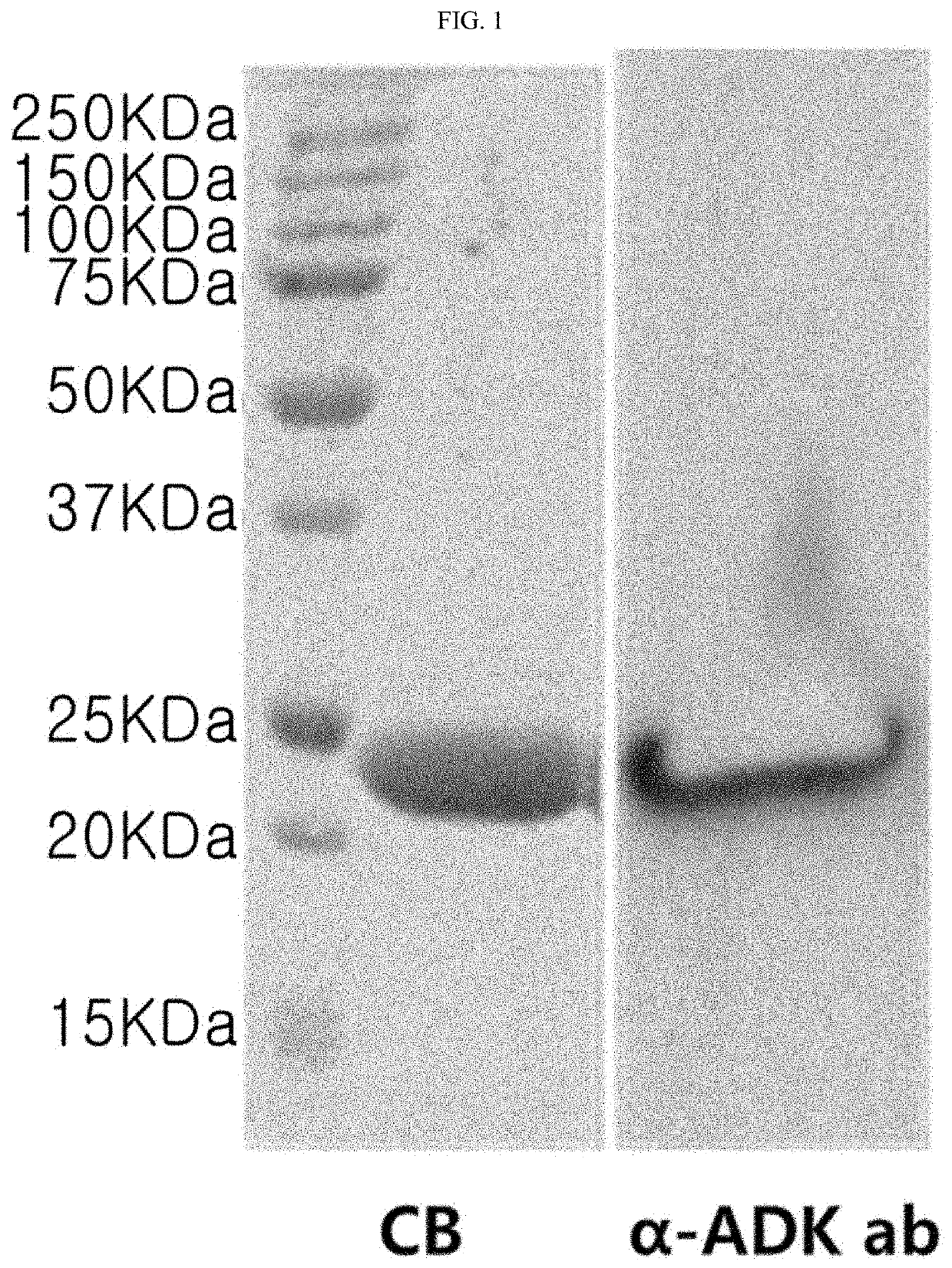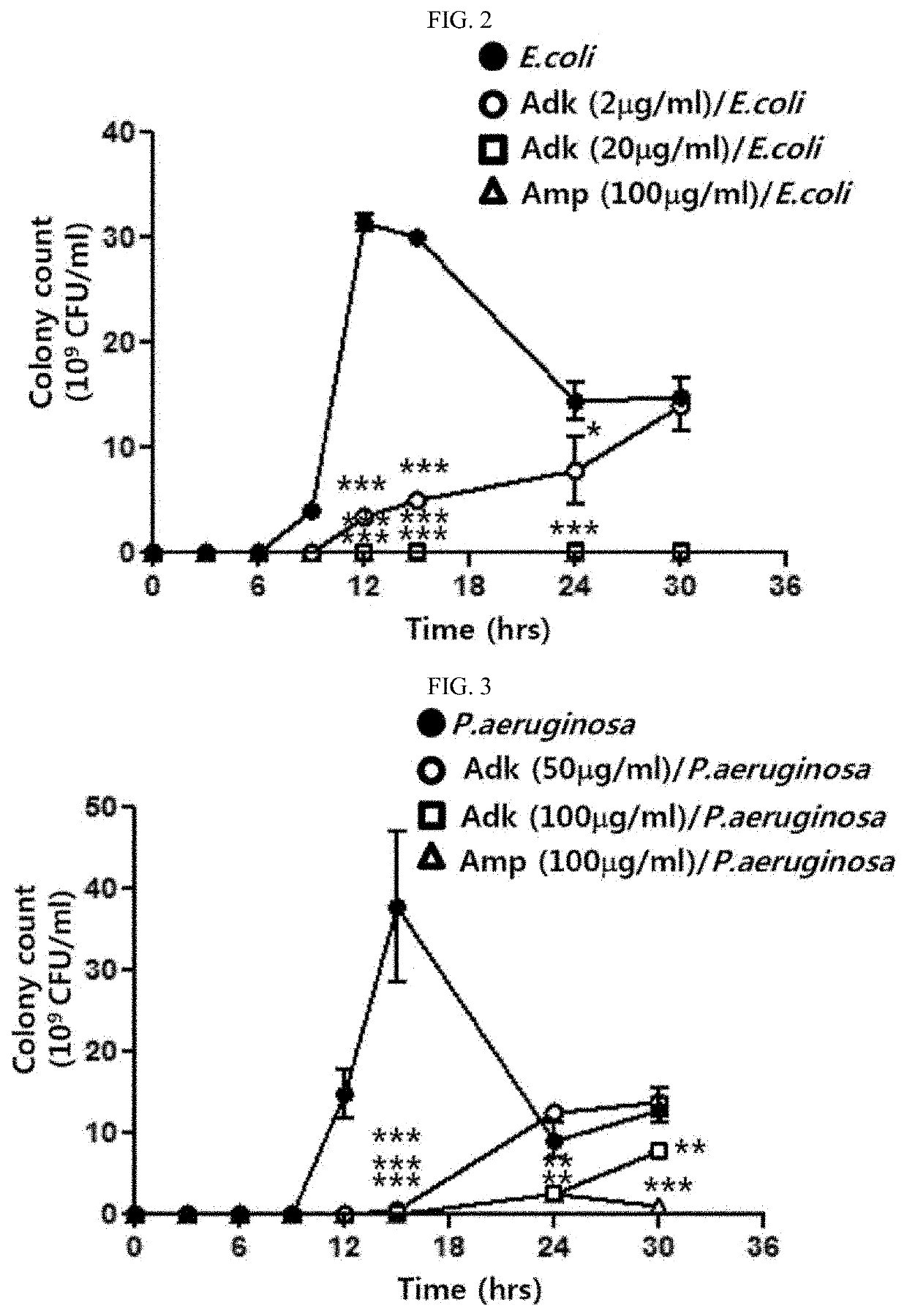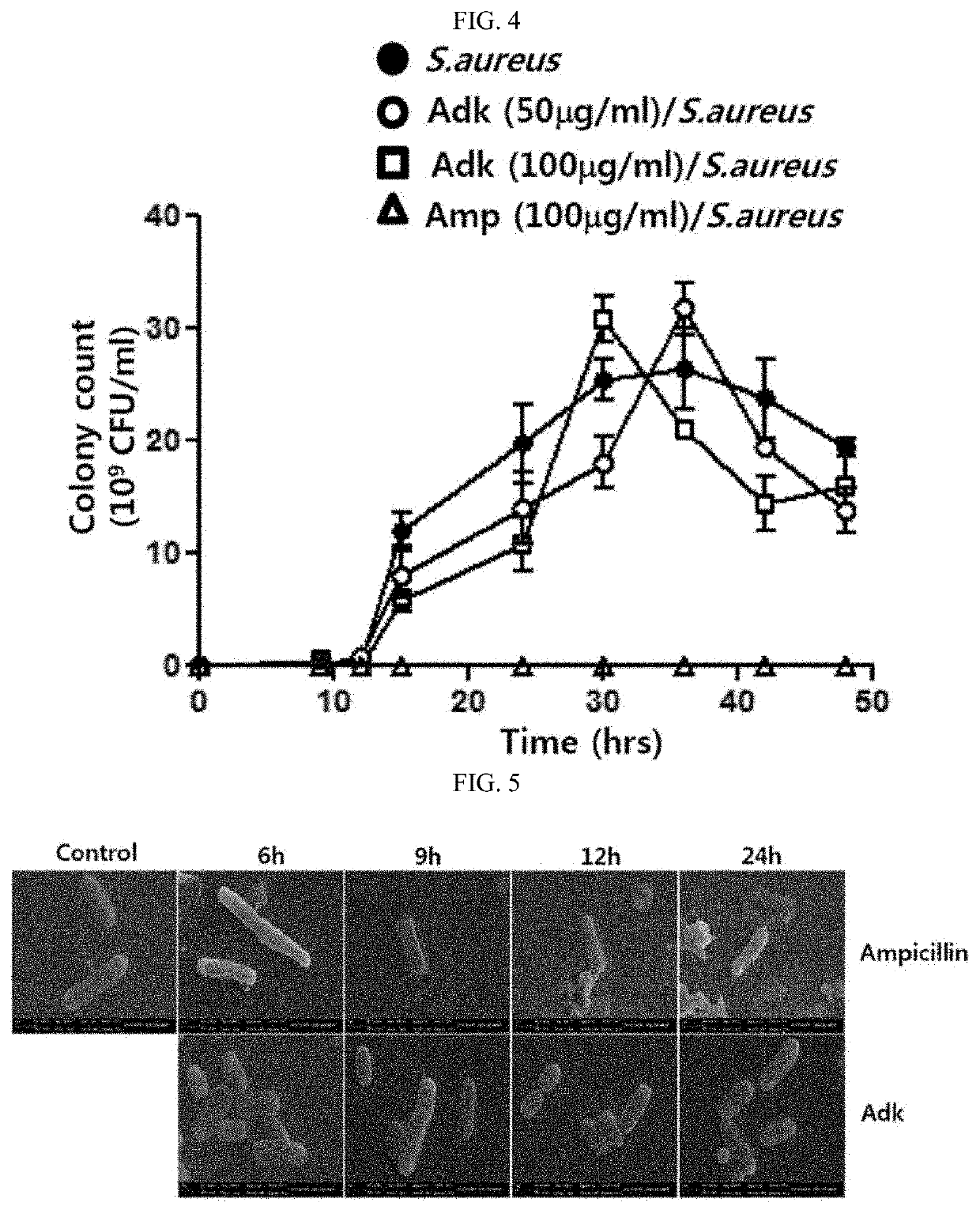Antibacterial composition containing ADK protein as active ingredient, or composition for preventing or treating sepsis
a technology of adk protein and active ingredient, applied in the direction of antibacterial agents, peptide/protein ingredients, transferases, etc., can solve the problems of sepsis, infection in the entire body or is accompanied by shock, and the use of antibacterial agents is becoming limited, so as to prevent or treat infectious diseases, inhibit the proliferation of bacterial cells, and the effect of excellent antibacterial activity
- Summary
- Abstract
- Description
- Claims
- Application Information
AI Technical Summary
Benefits of technology
Problems solved by technology
Method used
Image
Examples
example 1
f Recombinant ADK
[0089]An ADK (Rv0733) site was amplified by PCR using genomic DNA (ATCC 27294) of Mycobacterium tuberculosis H37Rv as a template (primers: 5′-CATATGAGAGTTTTGTTGCTGGGACCG-3′ and 5′-AAGCTTCTTTCCCAGAGCCCGCAACGC-3′). An isolated PCR product was cleaved with NdeI and HindIII restriction enzymes, and inserted into an expression vector, pET22b vector. E. coli BL21 transformed by the ADK gene-inserted pET22b vector was transferred to an LB broth (containing 100 μg / ml ampicillin), and cultured for 12 hours at 37° C. Afterward, 1 mM of isopropyl-D-thiogalactopyranoside (IPTG) was added to the resulting cells which were then cultured again for 6 hours and dissolved in a lysis buffer (containing 1M DTT, lysozyme and PMSF). A recombinant protein was purified using nickel-nitrilotriacetic acid (Ni-NTA, Invitrogen, Carlsbad, Calif., USA) agarose according to the manufacturer's method. Finally, the purified recombinant ADK protein was analyzed and confirmed by SDS-PAGE, reconfirmed...
experimental example 3
[0100]To confirm the effect of the recombinant ADK protein on the morphology of cells, following treatment of the recombinant ADK protein to E. coli over time, a scanning electron microscope (SEM) analysis was performed.
[0101]More specifically, following the addition of 100 ng / ml ampicillin (used as a positive control) or 20 ng / ml ADK protein to 10 ml of an LB broth, E. coli K1 was shake-cultured at 37° C. for a period of time. The cultured E. coli was washed with 1×PBS three times, and fixed with 1 ml of a 2.5% glutaraldehyde (Sigma-Aldrich, St. Louis, Mo.) solution. The sample was observed using LEO 1455 VP SEM (Carl Zeiss, Oberkochen, Germany). A negative control (Control) received no treatment. A result is shown in FIG. 5.
[0102]As shown in FIG. 5, it was confirmed that E. coli in the negative control (Control) has a bright and smooth cell surface, and in the ADK protein-treated group, a surface of E. coli is peeled off, and apoptosis occurs.
experimental example 4
[0103]To confirm the effect of the recombinant ADK protein on the degree of destruction of a cell surface and cell organelles, E. coli was treated with the recombinant ADK protein, and after 12 hours, transmission electron microscopy (TME) using gold nanoparticles was performed according to a known method. A negative control (Control) received no treatment. A result is shown in FIG. 6.
[0104]As shown in FIG. 6, it was observed that, in the case of E. coli in the negative control (Control), a cell surface was uniformly maintained, nanoparticles entered into the cell, and no destruction was shown, and in the case of a group treated with ADK protein-coated gold nanoparticles, the cell wall of E. coli was lost and apoptosis simultaneously occurred inside the cell (appearing white).
Experimental Example 5. Verification of Gram-Negative Selective Antibacterial Activity of ADK Protein Using Animal Model
[0105]To confirm whether the recombinant ADK protein selectively binds to gram-negative ba...
PUM
| Property | Measurement | Unit |
|---|---|---|
| body temperature | aaaaa | aaaaa |
| body temperature | aaaaa | aaaaa |
| nucleic acid | aaaaa | aaaaa |
Abstract
Description
Claims
Application Information
 Login to View More
Login to View More - R&D
- Intellectual Property
- Life Sciences
- Materials
- Tech Scout
- Unparalleled Data Quality
- Higher Quality Content
- 60% Fewer Hallucinations
Browse by: Latest US Patents, China's latest patents, Technical Efficacy Thesaurus, Application Domain, Technology Topic, Popular Technical Reports.
© 2025 PatSnap. All rights reserved.Legal|Privacy policy|Modern Slavery Act Transparency Statement|Sitemap|About US| Contact US: help@patsnap.com



